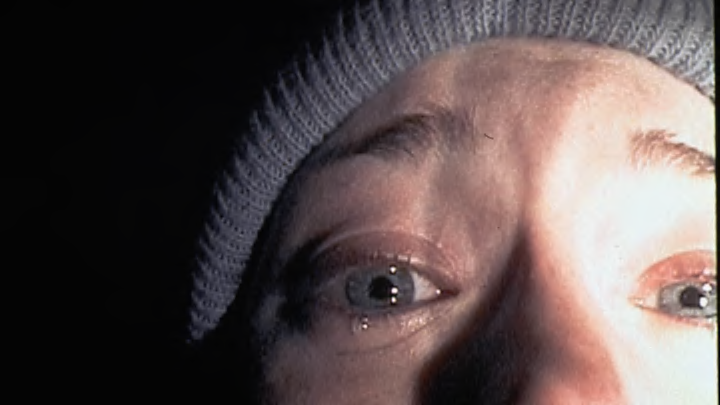Most viewers who watch The Blair Witch Project today know the horror movie was made with unknown actors on a shoestring budget. But when it hit theaters in 1999, an air of mystique still surrounded the production. To lend legitimacy to the film’s “found footage” backstory, the filmmakers forbid the three stars from doing press. Heather Donahue, Michael C. Williams, and Joshua Leonard (who shared names with their characters) were even listed as deceased on IMDb. One of the most memorable aspects of the unconventional marketing campaign was the website co-director Eduardo Sánchez built himself.
According to The A.V. Club, blairwitch.com was registered when the internet as we know it was still in its infancy. Sánchez was the only member of the production team with web-building expertise, so he volunteered to bring the mythology of the movie online.
The website included flyers showing the missing filmmakers, photos of their abandoned belongings, and a timeline of unusual events from Blair Township history. Browsers could get a taste of the movie by downloading video and audio clips that were purportedly recovered from the woods. The website even featured bonus material that wasn’t used in the film, like interviews with investigators and excerpts from Heather’s diary.
As is the case with the actual movie, the site’s low-budget feel works in its favor. Even if you know the three “filmmakers” are actors, the website makes it easy to buy into the story of their disappearance (especially if you’re reading it late at night). It’s also a goldmine for brave souls craving extra Blair Witch material after seeing that eerie final shot.
The original blairwitch.com is no longer active, which means you can’t log onto the message boards and dissect the movie’s mysteries like it’s 1999. Luckily the archived version is accessible via the Wayback Machine, and looks just like it did 23 years ago. We recommend checking it out indoors—even if you get good Wi-Fi in the haunted woods behind your house.
